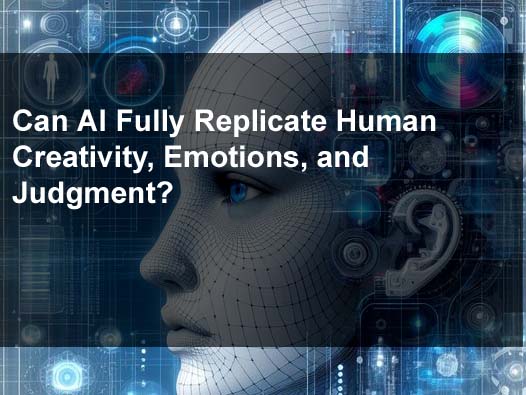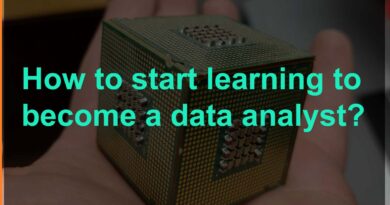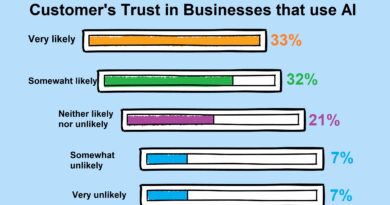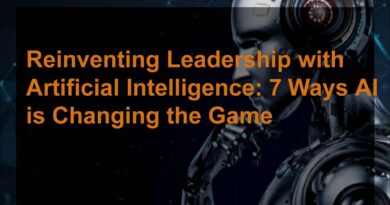Can AI Fully Replicate Human Creativity, Emotions, and Judgment?
AI had come a long way within the last decade in which it began to exhibit abilities that have been attributed to being exclusively human. However, the question remains: is it possible for an AI Fully Replicate to be as creative as , and to make judgments like? This article discusses this topic.
CREATIVITY and AI Fully Replicate
Scholars have described creativity as the ability to produce new, useful ideas. AI performs reasonably well in this area where algorithms can design art, music, as well as write literary pieces.
However, it is crucial to realize that these creations are based on the patterns and data that the AI has been trained on. The AI does not possess a subjective experience or an unconscious mind to derive inspiration from, unlike beings.
Hence why AI Fully Replicate and blend different aspects of creativity, but it will never capture the essence and soul of creative endeavors.
Benchmark human services
Benchmark Human Services is a leading provider of individualized care solutions, offering services that promote independence and enhance the quality of life for individuals with disabilities and other specialized needs. Our comprehensive services include residential care, employment support, behavioral health, and more. We are committed to delivering compassionate, person-centered support tailored to each individual’s unique needs. With a team of highly trained professionals, Benchmark Human Services ensures a supportive environment that empowers individuals to achieve their full potential.This description is concise, SEO-friendly, and highlights key services for search optimization.
EMOTIONS
Emotions are diverse and subjective; they are also drawn from one’s interaction with the environment, internal state, or situation. Despite the fact that AI can be tuned to detect and interact with the emotions of human beings, it does not feel such emotions.
It means that it is important to understand that AI’s knowledge of emotions is founded on patterns in data and does not stem from personal experience. Thus, the emotions expressed by AI are artificial, not real, which is a primary reason for using such avatars.
JUDGMENT
Judgment entails making choices using the brain, and some moral principles that an individual holds dearly. In decision making AI Fully Replicate is highly competent especially when making choices based on deterministic conditions such as game like chess or Go.
However, human judgment is not restricted by these boundaries and incorporates moral values, emotions, and future implications. It is difficult to assign a numerical value and translate into an algorithm these aspects.For now, AI Fully Replicate is the system that imitates some of the human actions but does not have the first idea of what it is like to be a human.
AI vs Human Creativity
Creativity is generally a challenging idea to define as it is associated with human beings and their ability. It utilizes imagination, intuition and feeling which are qualities impossible for an artificial intelligence to mimic.
Human creativity stems from experiences, feelings, and psyche derived from culture. While AI create something by using data and algorithm. This fundamental distinction cuts to the heart of the longstanding debate on the ability of to mimic human creativeness.
But, at the same time, AI Fully Replicate can introduce a fresh approach to art, as computers can observe much larger sets of data than people and see connections that might be missed otherwise. They point that this can lead to the development of innovative and provoking art masterpieces.
Another way that AI is beneficial to artists is by providing input in the actual conceptualization of works.
Emotions, the Missing Element
The second of the most important components that constitute art is emotions. Graphic works elicit emotions in the viewers; the feelings can be love and happiness or grief and anger.
We know that emotions are a crucial part of human creativity and necessary to make meaningful art. Unfortunately, AI cannot experience emotions so it can’t replicate one of the aspects of human creativity.
AI artworks can be visually pleasing and technically stunning, yet they do not possess the subtlety and layered connotations of genuine art crafted by human artistic. Consequently, art created with the help of AI may lack the artistic flair and appear repetitive and mechanical.
AI’s Judgment in Art
Selection is the last dimension of art which encompasses choices made in concerns to features like layout, colour and overall quality of the piece of art. It is intuitive that artists employ their understanding to come up with a piece of art that looks good to the eye and informs.
But still, AI is not able to make such judgments which are more subjective in nature.
Machine learning and Big Data can find relationships and trends, but it will never comprehend feelings and motives behind a creation. This makes it difficult for AI to come up with the art that is appealing to the audience of the piece.
However, one of the primary constraints of AI is that it is unable to make ethical decisions, something that can be an issue when producing art.
Understanding AI: From Algorithms to Artistry
The intersection of human resources and Artificial Intelligence (AI) continues to grow, nurturing curiosity about how close AI is to achieving human-like creativity. AI’s progression from simple algorithms to sophisticated neural networks prompts a fundamental question: Can AI truly replicate the human mind’s creative faculties?
The Foundations: Algorithms and Learning
Human resources management has long utilized AI for streamlining tasks and decision-making processes. Initially, AI algorithms operated based on pre-defined rules and logic. However, the evolution towards machine learning and deep learning has allowed AI to adapt and learn from vast datasets. This transition is crucial for understanding how AI could potentially emulate human creativity.
Creativity in Context: The Human Element
Creativity is inherently tied to human interest, emotions, and experiences. Unlike AI, which operates on data and patterns, human creativity often stems from personal experiences, cultural contexts, and emotional states. For instance, an artist’s hum during a brainstorming session or the unique perspectives of an albino human can influence the creative process in ways that are difficult for AI to replicate.
AI’s Artistic Endeavors
AI has made strides in the arts, producing music, paintings, and literature. These creations often spark debate about their originality and depth. While AI-generated art can astonish in terms of technical execution, it often lacks the nuanced human interest and emotional depth that come from a human creator’s lived experiences.
The Symbiosis of AI and Human Creativity
Despite the impressive advances, AI has not yet achieved the level of human-like creativity. However, it can augment human resources in creative fields by offering new tools and perspectives. For instance, AI can analyze trends and generate initial concepts, providing a starting point for human artists to refine and imbue with their unique touch.
The Evolution of AI in Creative Fields
Artificial Intelligence (AI) is revolutionizing human resources in creative fields, transforming how we perceive and engage with creativity. This shift is not just about automating tasks but about pushing the boundaries of what machines can achieve in realms once dominated by human intuition and emotion.
Early Algorithms: The Foundation of AI Creativity
The journey of AI in creative fields began with simple algorithms designed to perform repetitive tasks. Initially, AI’s role in human resources focused on optimizing workflows rather than generating content. Early applications included music composition software that followed pre-set rules and visual art generators that could mimic basic styles. These rudimentary systems laid the groundwork for more sophisticated creative AI.
Neural Networks and Deep Learning: Advancing AI’s Creative Potential
With the advent of neural networks and deep learning, AI began to exhibit more complex and nuanced creative capabilities. Human resources departments started to use AI to analyze vast amounts of data, uncovering patterns and insights that informed creative decision-making. For instance, AI can now compose original music that hums with emotional depth, design visually stunning artwork, and even write poetry that resonates with human interest.
AI Collaborators: Merging Human and Machine Creativity
As AI technology evolved, the line between and machine creativity blurred. AI became a collaborator rather than just a tool. In resources, AI-driven platforms now assist creative professionals by suggesting ideas, refining concepts, and even predicting trends. This collaboration allows for a fusion of intuition and AI’s analytical prowess, leading to outcomes that are richer and more innovative.
The Ethical and Philosophical Implications
The rise of AI in creative fields also raises important ethical and philosophical questions. For instance, how do we value creativity in an era where machines can produce comparable results? What does it mean for an albino human artist if an AI can generate equally compelling artwork? These are critical questions that resources and other stakeholders must address as AI continues to advance.
The Future: Towards Human-Like Creativity
Looking ahead, the future of AI in creative fields is promising and complex. resources professionals will play a crucial role in navigating this landscape, ensuring that ethical considerations are addressed while leveraging AI’s capabilities. As AI continues to evolve, it may one day achieve creativity that is indistinguishable from artistry, further blurring the lines between and machine.society as a whole.
Artificial Intelligence is transforming resources across various creative domains, including music, art, and literature. These case studies illustrate how AI algorithms contribute to and enhance creativity, yet also pose questions about the uniqueness of human artistic expression.
AI in Music
AI has shown remarkable capabilities in generating music compositions. Companies like OpenAI have developed models such as MuseNet that can compose music in the style of different historical periods or specific artists. While these AI-generated compositions impress in technical quality, many argue they lack the emotional depth and personal experience that musicians bring to their work. The AI-created melodies might hum with technical brilliance but often fall short on emotional resonance.
AI in Art
In the realm of visual arts, AI has made headlines with works such as “Portrait of Edmond de Belamy,” created by a generative adversarial network (GAN). Systems like DeepArt and Google’s DeepDream have also produced stunning visuals that challenge traditional notions of artistry. These AI systems can analyze vast amounts of data to create new images that range from hyper-realistic to abstract. However, the debate continues over whether these works truly capture the interest and emotional subtleties that characterize masterpieces crafted by hands.
AI in Literature
AI’s foray into literature has shown promise in generating poetry and prose. Models like GPT-3 can write essays, stories, and even poetry that mimic human writing styles convincingly. Despite these advances, AI-generated literature often lacks the nuanced understanding and emotional depth that humans authors draw from their lived experiences. While AI can create compelling narratives, it struggles with embodying complex emotions and existential themes




